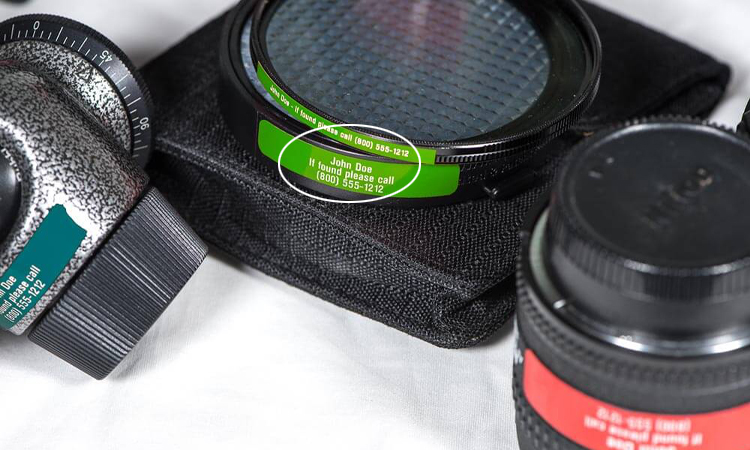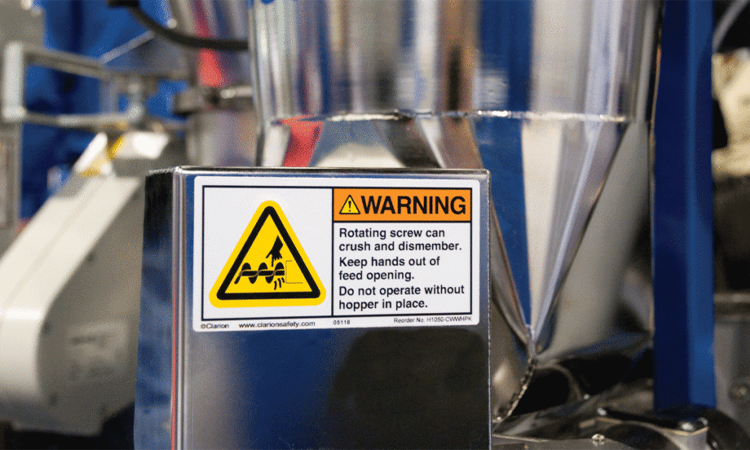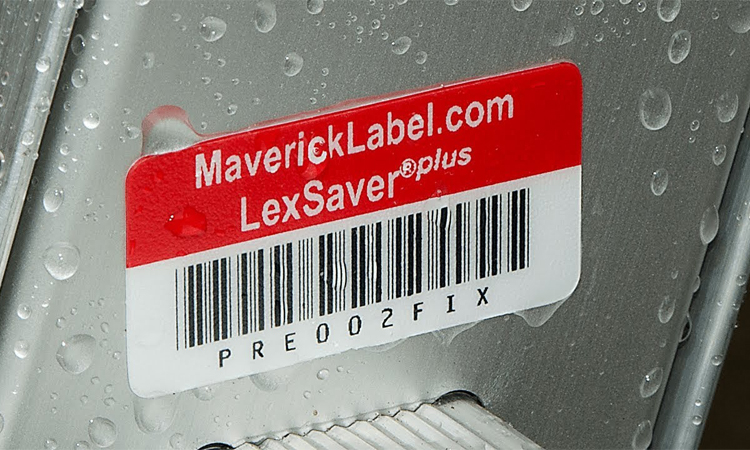Equipment tags play a vital role in various industries. They provide important information such as identification, warnings, and maintenance records. According to OSHA, an estimated 4,679 workers died on the job in 2014. A well-designed and properly implemented equipment tagging system can help prevent workplace accidents and fatalities.
Equipment tags are labels or markers attached to pieces of equipment to identify and provide information about them. These tags are typically made from durable materials such as metal or plastic, and they often include information such as the equipment’s serial number, model number, and other important details. Equipment tags are commonly used in industrial and manufacturing settings and other environments where it is important to keep track of and properly maintain various pieces of equipment.
Origin of Equipment Labeling
The use of equipment labels and tags to identify and track equipment can be traced back to the earliest days of industrialization. As factories and other industrial settings began to use complex machinery and equipment, the need arose to keep track of and properly maintain these assets. Equipment labels and tags were introduced as a simple and effective way to identify and track equipment and to provide important information about the equipment, such as its model number, serial number, and maintenance schedule. Over time, equipment labels and tags have become standard practice in many industries and settings, and they remain an essential tool for managing and maintaining equipment.
Equipment tags are a vital part of equipment management in many industries. They provide essential information about equipment identification, usage instructions, and safety information. This helping prevent workplace accidents. By using equipment tags, companies can ensure that their employees can quickly. They can easily identify equipment and understand how to use it safely and efficiently.
In addition to promoting safety, equipment tags also play a critical role in compliance with industry-specific regulations and standards. For example, the food industry requires equipment tags to meet specific color-coding requirements to prevent cross-contamination. The construction industry requires equipment tags to comply with safety regulations, such as warning tags indicating hazardous materials.
Effective equipment tagging systems can also improve equipment maintenance. This ensuring that equipment is serviced and repaired on time. This can help prevent equipment failure, downtime, and costly repairs. By implementing a proper equipment tagging system, businesses can promote workplace safety, compliance, and efficiency.
Equipment tags are a crucial source of information about the equipment, and the information included can vary depending on the type of equipment tag. However, several common pieces of information are found on most equipment tags.
The following table describes the information contained in the different equipment tags:
| Tag | Information Contained |
| Identification Equipment Tags |  Identification Equipment Tags typically include the equipment’s name, model number, serial number, and manufacturer details. This information helps track equipment, verify its authenticity and ensure that the correct replacement parts are ordered. |
| Warning Tags |  Warning tags contain safety instructions, such as warnings about hazardous materials, high voltage, or moving parts. These tags help prevent accidents by alerting workers to hazards and reminding them of proper safety procedures. |
| Instruction Tags |  An instruction label is a label or marker attached to a device or piece of equipment to provide detailed instructions for using it. Instruction labels typically provide step-by-step instructions for operating the device and troubleshooting tips for common problems. Instruction labels are commonly used in various settings, including industrial and manufacturing environments, where users need clear and concise instructions for properly using the equipment. |
| Asset Tags |  An asset label is a label or marker attached to a device or equipment to track its ownership and location. Asset labels often include a unique identifier, such as a barcode or serial number, that can be used to quickly and easily identify the equipment and its location. Asset labels are commonly used in various settings, including warehouses, inventory management systems, and asset tracking systems, where it is important to keep track of the whereabouts of equipment and other valuable assets. |
| Tamper-proof Tags |  A tamper-proof label is a label or mark attached to a device or equipment. It is used primarily to tell people if someone else has opened or tampered with it. Security labels usually include a special adhesive or other security features. If the label is removed or tampered with, it will leave a visible mark. These labels are commonly used in various settings, including manufacturing and retail environments, where it is important to ensure that equipment and products are functioning properly and have not been compromised. |
| Inspection Tags | Inspection tags provide information about the date of the last inspection, the inspector’s name, and any identified issues. This information helps ensure equipment is regularly inspected, and problems promptly addressed. |
| Maintenance Tags | Maintenance tags typically include information about the equipment’s maintenance schedule. These including the last maintenance date and the recommended interval between maintenance checks. This information helps ensure that equipment is well-maintained, reducing the risk of breakdowns and extending its lifespan. |
Equipment tags come in different types, each with unique features and benefits. Metal equipment tags are the most common type, durable and long-lasting. They can be stamped or engraved with crucial information and made from materials like stainless steel, brass, and aluminum.
Plastic bags are an affordable option, lightweight, and ideal for industries that require frequent tag replacement. They are made from polyester, polypropylene, and polycarbonate. They also can be printed with important information such as barcodes and QR codes.
RFID tags use radio frequency identification technology to store and send information. It allowing easy tracking and usage monitoring. RFID tags are popular in many industries and can be scanned with RFID readers.
Industry-specific equipment tags are also available. For instance, electrical equipment tags meet specific regulations and requirements for electrical equipment. Hazardous material tags meet OSHA and HCS labeling requirements for identifying hazardous materials.
There are several benefits to using equipment tags, including the following:
- Improved organization: Equipment tags help to keep track of different pieces of equipment and ensure that they are properly organized. This can help prevent equipment from getting lost or misplaced, making it easier to find the equipment needed for a particular task.
- Enhanced safety: Equipment tags can provide important safety information, such as the maximum weight that a piece of equipment can support or the type of protective equipment that must be worn when using the equipment. This can help to prevent accidents and injuries.
- Improved maintenance: Equipment tags can include information about the maintenance schedule for each piece of equipment. This helps ensure that equipment is properly maintained and that necessary repairs are made on time.
- Enhanced efficiency: By keeping track of equipment and ensuring it is properly maintained, equipment tags can help improve a work environment’s overall efficiency. This can help to reduce downtime and increase productivity.
Overall, equipment tags provide a simple and effective way to keep track of equipment and ensure that it is properly maintained, which can help improve safety, organization, and efficiency in various settings.
How to Choose the Right Equipment Tag
When choosing equipment tags, there are several factors to consider, including the following:
- The type of equipment: Different types of equipment may require different tags, such as identification tags for general information or warning tags for safety information.
- The environment: The environment in which you will use the equipment can affect the type of tag needed. For example, tags resistant to water, chemicals, or extreme temperatures may be necessary for certain environments.
- The intended use: The equipment’s intended use can also affect the type of tag needed. For example, tags designed to withstand heavy use or rough handling may be necessary for equipment used frequently or in demanding environments.
- The durability: The durability of the equipment tag is also an important factor to consider. Tags made from durable materials such as metal or plastic are typically more resistant to wear and tear and can provide longer-lasting performance.
Overall, it is important to carefully consider the specific needs and requirements of the equipment and the work environment when choosing equipment tags. This helps ensure the right tag type is selected for the equipment.
How do Tag Equipment?
To tag equipment, you will need to follow these steps:
- Choose the appropriate equipment tags for your needs. Consider the type of equipment, the environment, the intended use, and the durability of the tags when making your selection.
- Attach the equipment tags to the equipment in a visible and easily accessible location. Ensure the tags are securely attached and will not easily fall off or become damaged.
- Use a pen or other writing instrument to fill the tags with the necessary information. This may include the equipment’s serial number, model number, and other relevant details.
- Once the tags are filled out, double-check the information to ensure that it is accurate and complete.
- If you use asset labels or other tracking tags, update your inventory or asset tracking system with the new information.
Tagging equipment is a straightforward process that can help to keep track of equipment and ensure that it is properly maintained and used safely.
In conclusion, equipment tags are essential for identifying and organizing equipment on the job site. Not only do they improve efficiency and organization, but they also help prevent accidents and ensure compliance with safety regulations. There are several types of equipment tags to choose from, depending on the specific needs of the job site. By choosing the right equipment tags, you can improve the safety and efficiency of your operations.
-
Can You Test and Tag Your Equipment?
A qualified professional generally recommends that equipment be tested and tagged. Testing and tagging involve conducting safety tests on equipment to ensure that it is functioning properly and meets safety standards and then attaching a tag to the equipment to indicate that it has been tested and passed the tests. Testing and tagging equipment can be a complex and technical process, and it is important to ensure that it is done properly to avoid potential hazards. As such, it is generally best to have equipment tested and tagged by a qualified professional with the necessary training and expertise to do the job safely and effectively.
-
When Should a Tag be Placed on Equipment or Circuits?
A tag should be placed on equipment or circuits when the equipment is first installed or when it is first put into service. This is typically done as part of the initial setup and installation process. It is important to ensure that the tag is properly attached and contains all the necessary information. In some cases, equipment may also need to be retagged if it is moved to a new location or undergoes significant changes or modifications. In general, it is important to ensure that equipment is properly tagged at all times to be easily identified and tracked and to help ensure that it is used safely and properly maintained.
-
You can buy equipment tags at various stores or online retailers that sell industrial or safety equipment. Some examples of stores that may sell equipment tags include industrial supply stores, safety equipment stores, and online retailers that specialize in industrial or safety products. You can also buy equipment tags from manufacturers or distributors of the equipment that you are using. Many manufacturers and distributors offer a range of accessories and supplies, including equipment tags, designed to be used with their products. You can contact the manufacturer or distributor of your equipment to inquire about purchasing equipment tags from them.








